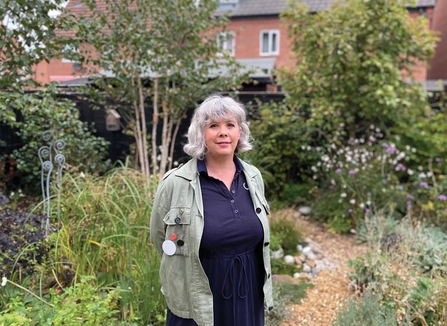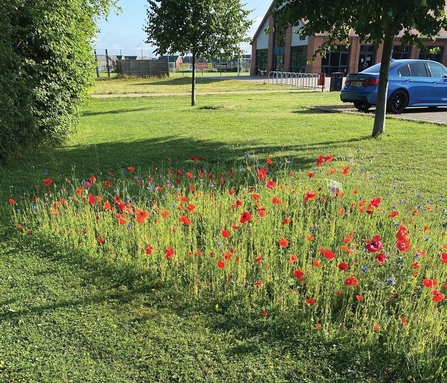As spring is now here and thoughts of winter fade away, we mustn’t forget the impact climate change can have on our winter weather. Across the UK, 1.9 million people currently live in areas of significant flooding. This number could double as early as the 2050s.
We are in the middle of a climate and nature emergency, and the two are linked. Climate change is driving nature’s decline, and the loss of wildlife and wild places leaves us ill-equipped to both reduce carbon emissions and adapt to the changes we’re now facing. Simply speaking, one cannot be solved without the other.
When human activities produce greenhouse gases, approximately half the emissions remain in the atmosphere. The other half is absorbed by the land and ocean. Natural spaces rich in diverse wildlife are essential for limiting carbon emissions and adapting to an already changing climate.
When in a healthy state, our natural habitats can reduce the risk of flooding. They can help prevent coastal erosion, can improve people’s health and wellbeing, as well as helping to maintain healthy soils and clean water. A healthy habitat also helps protect the pollinators we need for our crops. Therefore, our natural spaces and wildlife help to sustain us.
Whilst many of us have a limited ability to manage and restore forests, peatlands, marshes and swamps, or ocean habitats such as seagrasses and mangroves, which can take carbon dioxide out of the atmosphere, we can make small changes which have a big impact. This is what we call #TeamWilder. So as Spring approaches, we can think about what we could do in our own gardens and community spaces, to help bring wildlife back and to help slow down climate change.
Dionne, in Warwickshire, a finalist for BBC Gardeners’ World Garden of the Year competition, has started to do just this.

Dionne in her wildlife-friendly garden
Dionne lives in a new build house in South Warwickshire and gardens to support wildlife. She uses organic, peat-free products and native species in her planting. She says:
“Another thing I’ve done is add nest boxes – blue tits have used one and I have planted several climbers, shrubs, and trees so I get lots of birds. I’m certainly enjoying flocks of goldfinches, a few greenfinches, blue, great and long tailed tits, starlings, robins, blackbirds, collared doves, pigeons and a wren at the moment. We were visited by a sparrowhawk last week too – very exciting! Plus, a blackcap this week which was a first for this garden.”
She has also installed bee hotels – hollow tubes for solitary bees on a south facing fence near to her pond – and they are all full and busy with bees throughout the summer. Despite her garden only being five years old, she has nesting birds and frogs and dragonflies breeding in her pond.
“I get so much pleasure from the wildlife that comes to my garden, I’d be very happy to encourage others to do the same. It is good to be part of a wider wilder community. ”
Dionne also does a lot to support community planting in the village in which she lives. The community came together to protect a woodland which was threatened with housing development. They saved the woods and now work to support wildlife and improve their local green spaces. The community have planted native species trees and hedgerows and introduced beautiful wildflower patches and planted hundreds of bulbs, including bluebells, native daffodils, aconites, and snakehead fritillary in shared areas which were previously just grass. They worked with the local ground maintenance team to reduce mowing of greens and obtained funding from Warwickshire County Council to provide compost bins and water butts for residents.
Dionne has also started a mini tree nursery, “I collect seeds in the autumn when out walking – acorns, pinecones, fruit etc – my pockets are always full of bits I collect from trees and hedgerows. I sow the seeds and grow them to include in our community planting. So easy, costs nothing, zero carbon footprint and I expect the trees will do better as they are from local stock. I’m hoping to plant out a few of my first home-grown trees (oaks and crab apples) this weekend.”

Community wildlife patch by Dionne
Not only is community planting a great way to take local action for nature, but it is also a great solution to the country’s health crisis too.
“It’s a great way to meet your neighbours and make new friends. I use this opportunity to promote wildlife friendly gardening, and the benefits of the outdoors to support wellbeing. It is so important. I get so much pleasure from the wildlife that comes to my garden, I’d be very happy to encourage others do the same. It is good to be part of a wider wilder community.”
Click here if you’ve already made some changes or plan to soon, and tell us all about it by mapping your action.

